Table of Contents
1. Introduction: The Rise of Sustainable Wooden Packaging
Across candles, cosmetics, gourmet foods, and specialty beverages, brands are moving away from plastic closures toward natural materials that signal quality and responsibility. At the center of this shift is the wooden lid—a small component with an outsized impact on shelf appeal, sustainability credentials, and perceived value. For B2B buyers, it solves three problems at once: it looks premium, it aligns with eco mandates, and it performs reliably in day-to-day use.
Unlike petroleum-based caps, wooden lids are crafted from renewable timber (e.g., teak, acacia, beech, ash, rubberwood) and can be finished with non-toxic, food-safe coatings. The tactile grain and warm tone elevate otherwise standard jars, turning commodity packaging into branded objects customers want to keep and reuse. Functionally, modern lids incorporate precision CNC machining and optional silicone or cork gaskets to achieve a tight, repeatable fit—meeting the sealing expectations of candle makers, spice producers, and skincare brands alike.
For importers and private-label owners, the business case is clear: the right supplier can deliver consistent dimensions across multiple diameters (30–120 mm), flexible OEM/ODM customization (engraving, staining, varnish tones), and export-ready compliance (FSC, BSCI, ISO 9001; Prop 65/FDA where applicable). In a market where retailers and marketplaces increasingly prioritize sustainability, switching to wooden lids is both a branding upgrade and a strategic procurement decision.


Read more: “Wooden Spice Jars: The Timeless Blend of Natural Design and Functional Kitchen Storage”
2. Why Wholesale Wooden Lids Are in High Demand Across Global Markets
In the global packaging industry, sustainability has moved from “nice-to-have” to “non-negotiable.” From candle makers and cosmetics brands to gourmet food producers, buyers are searching for natural materials that reduce plastic use without compromising quality or brand identity. This demand has placed the wooden lid at the center of a major procurement trend.
A. Cross-Industry Adoption
- Home fragrance and candle brands use wholesale wooden lids to replace tin or plastic caps. They add tactile warmth and can double as coasters, making the product more gift-ready.
- Cosmetics and skincare companies prefer wooden lids for creams, serums, and bath salts because they communicate purity and clean beauty values.
- Gourmet food and spice producers use them to achieve both airtight protection and an artisanal, farm-to-table aesthetic.
- Beverage and honey manufacturers choose wooden closures for limited-edition jars to emphasize craftsmanship and traceability.
B. Market Momentum and Buyer Motivation


According to a 2025 Global Sustainable Packaging Review, demand for renewable closures such as wooden lids is growing at over 12 % CAGR, driven by green retail policies in the EU and rising eco-label requirements in North America. Major retailers now mandate suppliers to phase out single-use plastics, forcing importers and private-label owners to re-specify components. Grand View Research
Buyers report three decisive factors behind the shift:
- Aesthetic differentiation – wood adds visible quality to otherwise standard packaging.
- Eco-compliance – FSC-certified timber simplifies export audits and brand sustainability reporting.
- Consumer appeal – studies show shoppers are 40 % more likely to purchase products packaged in natural materials.
C. Implications for B2B Procurement
For wholesalers and sourcing managers, wooden lids represent a new value category: sustainable, customizable, and margin-friendly. Factories in Vietnam, Indonesia, and Eastern Europe can now supply millions of pieces annually while maintaining certification integrity and consistent CNC precision. Bulk orders, flexible MOQ, and global shipping options make wholesale wooden lids an accessible upgrade for any brand looking to modernize its packaging portfolio.
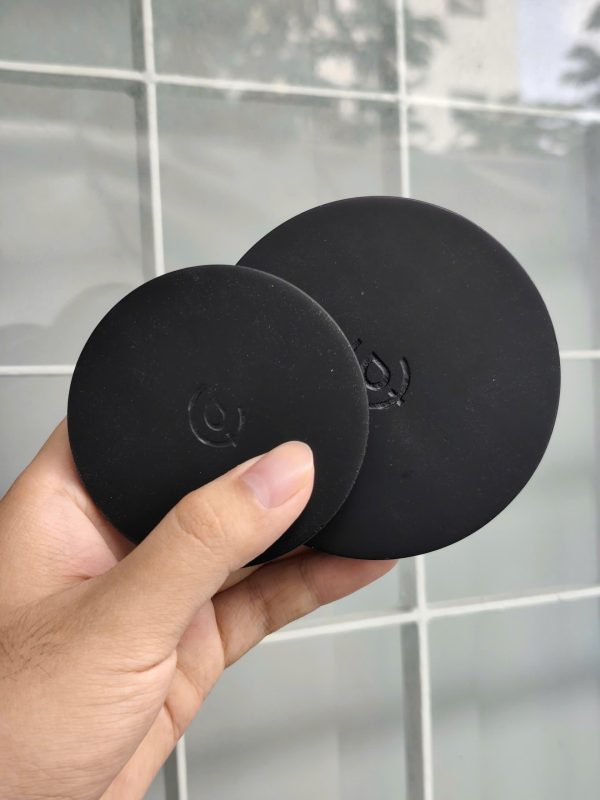

3. Material Excellence: What Makes a Quality Wooden Lid
Every premium packaging solution starts with the right material. For buyers and importers, understanding what distinguishes a true high-quality wooden lid from a basic one is essential to ensuring performance, aesthetics, and regulatory compliance.
A. Choosing the Right Wood Species
Different woods offer distinct textures, colors, and technical benefits:
- Teak Wood Lids – Rich gold-brown grain and natural oil content make teak highly resistant to moisture and cracking. Ideal for food and candle applications.
- Acacia Wood Lids – Sustainably grown, dense, and lightweight. Excellent for bulk production with consistent color.
- Beech and Rubberwood – Cost-efficient options with smooth, fine grain suitable for paint or stain finishes.
- Ash or Oak Lids – Preferred for luxury packaging lines where visible grain is part of the design language.
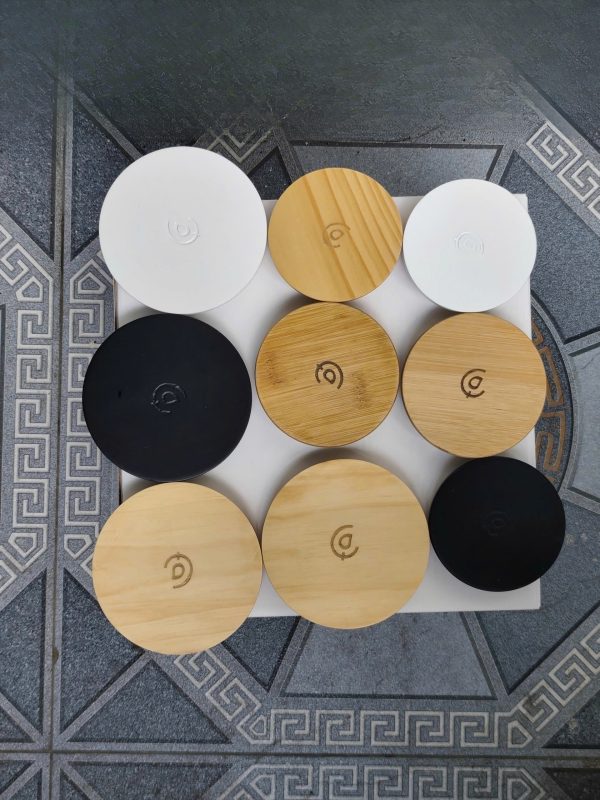

Read more: “Top 6 Materials Bring Advantages for Wholesale Steak Board Wood Ordering in Bulk”
Selecting a certified source matters as much as aesthetics. Using FSC-certified timber ensures traceable origin and legal harvesting — a must for European and U.S. imports under EUDR and Lacey Act rules.
B. Precision in Machining and Fit
A well-made wooden lid fits perfectly on its jar without forcing or loosening over time. High-precision CNC machining and lathe turning achieve ±0.2 mm tolerance — critical for glass or metal jars that demand uniform diameters.
Manufacturers often combine machined accuracy with hand-sanding for a seamless touch. Edges are rounded to avoid splintering and to ensure a smooth, ergonomic feel.
Optional add-ons for better functionality:
- Silicone gaskets for airtight food or cosmetic sealing.
- Cork inserts for natural, biodegradable closure systems.
- Threaded or magnetic designs for modern candle and jar lines.
C. Finishing and Surface Protection
Quality finishing defines the product’s longevity and brand perception.
- Oil finish (teak or linseed) preserves grain depth and repels moisture.
- Water-based coatings offer eco-safe gloss without VOC emissions.
- UV-cured lacquer adds scratch resistance for high-traffic retail products.
For food-contact packaging, manufacturers apply FDA-approved or Prop 65-compliant finishes that are odorless and non-toxic.
D. Consistency and Inspection
B2B buyers judge factories by consistency. Each shipment should deliver identical color tone, weight, and fit across thousands of units. Factories like Thanh Tùng Thịnh (Thatuwood) implement AQL 2.5 inspection protocols and moisture control (8–12 %) to prevent warping during transit.
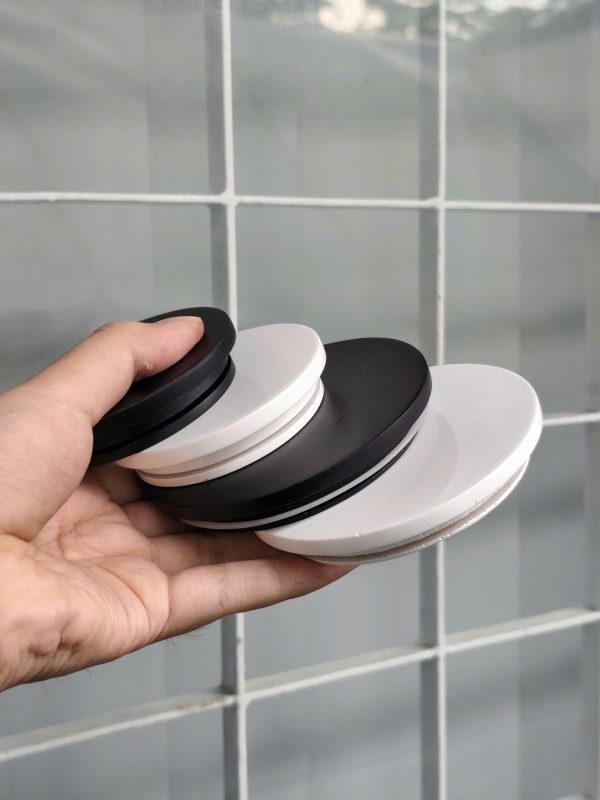

4. OEM & ODM Customization: Designing Your Perfect Wooden Lid
In the competitive world of packaging, differentiation drives sales. For brand owners and importers, the ability to customize a wooden lid is what transforms a standard component into a signature element of product identity. Modern factories, particularly in Vietnam and Southeast Asia, now offer full OEM (Original Equipment Manufacturing) and ODM (Original Design Manufacturing) services — combining precision engineering with creative flexibility.
A. Custom Dimensions and Compatibility
Every jar or container line has its own diameter, thread design, and sealing requirement. Through CNC machining and digital modeling, manufacturers can produce wooden lids in any dimension, from 30 mm cosmetic jars to 120 mm candle containers.
Common customizations include:
- Internal fit adjustments for glass, metal, or ceramic jars.
- Optional gaskets (silicone, cork, bamboo fiber) to improve airtightness.
- Threaded or press-fit variants for specific product categories.


Read more: “TOP 5 MUST-HAVE WHOLESALE WOODEN KITCHENWARE ITEMS FOR F&B & HOSPITALITY BUSINESSES IN 2025”
B. Branding and Surface Personalization
Wood offers an ideal surface for branding — it accepts engraving, embossing, or color application beautifully.
B2B clients often choose:
- Laser-engraved logos for natural elegance.
- Embossed or debossed branding for tactile recognition.
- Color stains or paint finishes aligned with corporate palettes.
- Printed batch codes or scent names for candle or spice collections.
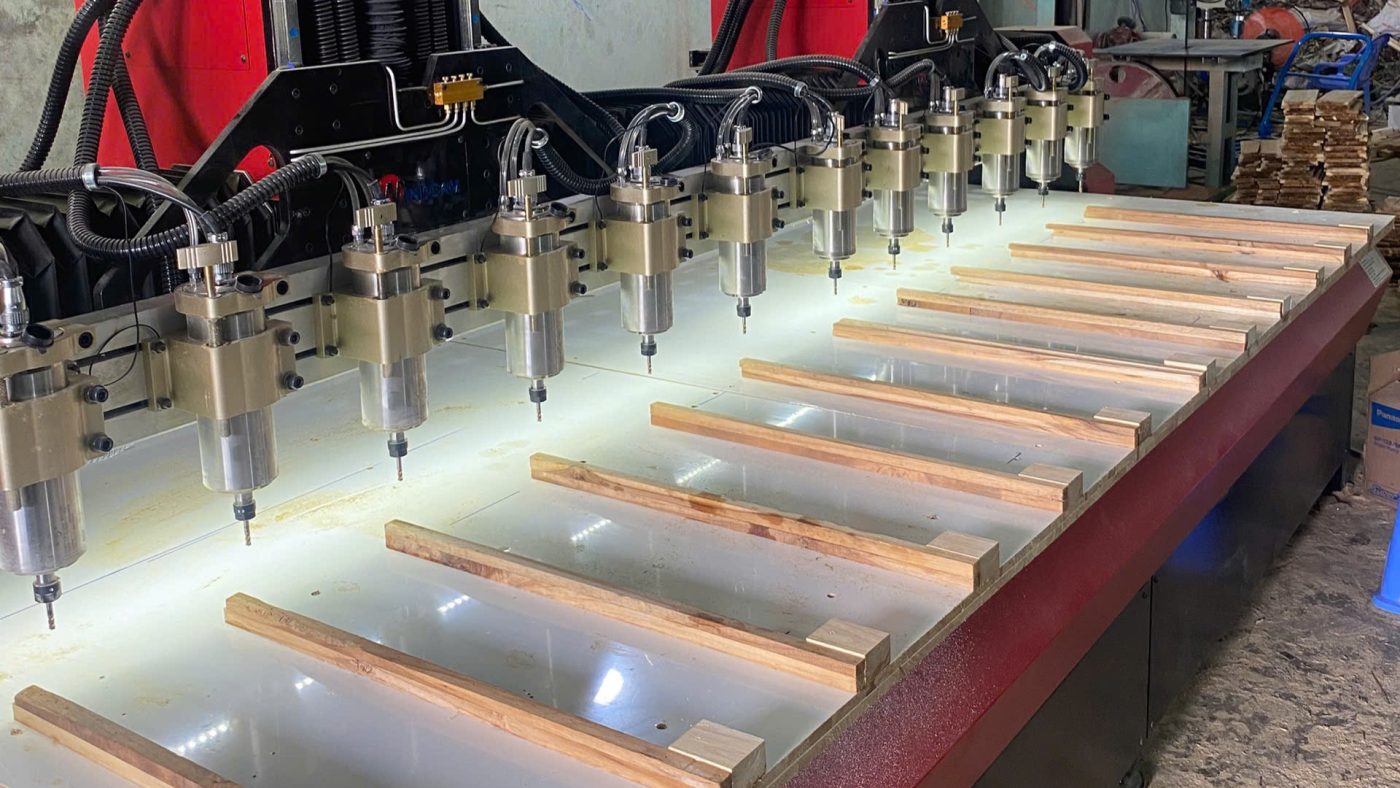

This personalization transforms lids into storytelling tools — reinforcing a brand’s eco values and visual consistency.
C. Design Collaboration (ODM)
For brands without an in-house design team, ODM services provide creative direction and prototyping. At Thanh Tùng Thịnh (Thatuwood), designers work with clients to develop lid sketches, material samples, and 3D renderings before tooling begins.
ODM support covers:
- Shape innovation (flat-top, domed, beveled, ridged).
- Blended-material concepts (wood + glass insert, wood + metal ring).
- Sample sets for trade fairs or retailer presentations.
Each prototype goes through real-world testing — checking durability, tolerance, and color variation before scaling into mass production.
D. MOQ and Production Flexibility
Global buyers operate under different purchasing volumes. Leading Vietnamese suppliers now offer flexible MOQ (Minimum Order Quantity) starting at 1,000–3,000 pcs for new projects, scaling to 50,000+ pcs for established models.
Shorter production lead times (4–6 weeks for repeat orders) help brands synchronize with product launches or seasonal campaigns.
Customization turns a wooden lid from a component into a canvas — where your brand’s identity, sustainability, and design philosophy are etched in every grain.
5. Sustainability at the Core of Every Wooden Lid
For modern brands, sustainability is no longer a slogan — it’s a procurement standard. Every wooden lid produced for export now carries the responsibility to prove its environmental and social integrity. From raw material sourcing to finishing and packaging, B2B buyers expect transparency, traceability, and measurable eco-performance.
A. Certified and Responsible Sourcing
The foundation of a sustainable wooden lid lies in its origin.
- FSC (Forest Stewardship Council) certification ensures that timber is harvested from responsibly managed forests with biodiversity protection and fair labor practices.
- BSCI (Business Social Compliance Initiative) guarantees ethical working conditions and fair wages throughout the production chain.
- EUDR (EU Deforestation Regulation, 2024) requires suppliers to provide GPS-based traceability of forest plots before products can enter the EU.
Read more: “BSCI Certification — The Key to Responsible and Sustainable Global Trade in 2025”
At Thanh Tùng Thịnh (Thatuwood), all wood used for lids and kitchenware is fully traceable under FSC standards. Every shipment includes documentation verifying origin and compliance — a vital reassurance for European and North American importers.
B. Low-Impact Manufacturing
Modern wooden lid production combines craftsmanship with environmental efficiency:
- Kiln drying optimizes moisture content (8–12%) to reduce waste and prevent rejection rates.
- Energy-efficient CNC machinery minimizes scrap through precise cutting.
- Dust collection and recycling systems convert wood offcuts into biomass fuel.
- Water-based coatings replace solvent-based varnishes, reducing VOC emissions by up to 80 %.
These eco upgrades not only meet green-audit standards but also lower long-term operating costs — a win-win for manufacturer and buyer alike.
C. Non-Toxic Finishes and Food Safety
For packaging used in cosmetics or food applications, safety is as important as sustainability.
Thatuwood’s finishing lines use FDA- and Prop 65-compliant oils that are odorless, color-stable, and free from heavy metals or phthalates.
Every batch undergoes SGS testing to verify chemical safety and coating adhesion.The result: a product that is not only eco-friendly but also 100 % safe for direct consumer use — a crucial factor for buyers in the EU, USA, and Japan.
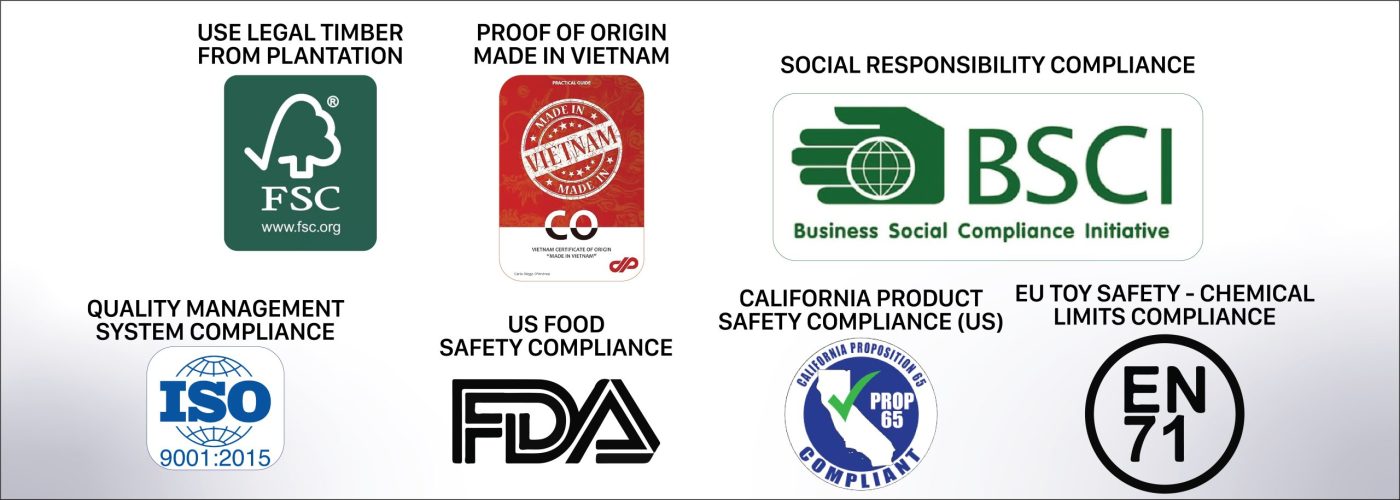

D. Circular Design and End-of-Life Benefits
Wooden lids naturally support a circular economy:
- They can be reused, refinished, or composted at the end of their life cycle.
- Biodegradable seals and recyclable packaging further reduce landfill waste.
- When paired with glass jars, the entire package becomes plastic-free and fully recyclable.
This design philosophy helps brands align with zero-waste and carbon-neutral goals — key to winning contracts with eco retailers and conscious consumers


7. Quality and Compliance: Ensuring Every Wooden Lid Meets Global Standards
For international buyers, visual beauty means little without guaranteed consistency and compliance. In a world of strict import audits and brand-reputation risk, every wooden lid must meet measurable quality benchmarks and pass third-party verification.
A. Dimensional Accuracy and Fit
A difference of just 0.3 mm can determine whether a lid seals perfectly or fails inspection.
- CNC precision machining and digital templates maintain tolerances within ±0.2 mm.
- Random-sample testing from each batch confirms smooth engagement with partner jars.
- Repeated torque and vibration checks ensure lids stay secure during global transport.
At Thanh Tung Thinh, each lot is double-checked before packing—one mechanical inspection and one manual verification for finish and feel.
B. Moisture and Structural Stability
Wood naturally expands and contracts with humidity. Controlled kiln drying to 8 – 12 % moisture content minimizes this risk.
- Products undergo 48-hour humidity cycling tests to prevent warping.
- Vacuum sealing and desiccant packaging stabilize conditions during shipping.
This attention to moisture control guarantees that lids arrive factory-fresh even after weeks at sea.
C. Surface Finish and Food-Safety Testing
Compliance with global chemical standards is non-negotiable.
- SGS and Intertek testing verify lead-free, BPA-free, and phthalate-free finishes.
- Prop 65 (California) and FDA food-contact approvals confirm consumer safety.
- For EU imports, coatings meet REACH and EN 71-3 heavy-metal limits.
Every finish is recorded by batch number for full traceability during audits.
D. AQL and Documentation
Buyers receive complete inspection documentation under AQL 2.5 or stricter levels, depending on order value.
- Reports cover visual defects, color deviation, dimensional checks, and packaging integrity.
- Each carton carries a QC pass label with date, inspector code, and humidity reading.
This structured process reduces rejection rates to below 1 %, protecting both buyer timelines and brand reputation.
E. Continuous Improvement Culture
Thatuwood integrates ISO 9001:2015 quality-management principles into daily production:
- Monthly calibration of all measuring devices.
- Statistical process control (SPC) for machining accuracy.
- Annual third-party audits to verify ongoing compliance.
Quality isn’t a stage at the end of production; it’s embedded in every grain, every lid, and every shipment leaving the factory.
8. How Wooden Lids Elevate Brand Identity and Packaging Design
In today’s crowded retail shelves and online marketplaces, packaging isn’t just a container — it’s a silent salesperson. For premium brands in candles, cosmetics, gourmet food, and lifestyle goods, the wooden lid has become a defining detail that communicates craftsmanship, sustainability, and trust.
A. Turning Function into Aesthetic Value
While a wooden lid’s first purpose is protection, its design instantly signals quality. The natural warmth of wood softens the cold perfection of glass or metal, giving products a tactile balance between luxury and earthiness.
- Candle brands use engraved wooden lids to elevate perception — each opening and closing becomes part of the sensory experience.
- Skincare labels pair light maple or acacia lids with frosted glass jars to highlight purity and minimalism.
- Gourmet producers use dark teak finishes for rich, organic tones that align with “farm-to-table” identity.
This blend of form and function transforms simple packaging into a storytelling element — one that customers are proud to display rather than discard.
B. Enhancing Consumer Perception
Packaging psychology studies show that natural textures increase perceived value by 30–40 % compared to synthetic surfaces. Wood subconsciously communicates “authentic,” “sustainable,” and “crafted,” building emotional connection and brand loyalty.
When buyers hold a wooden lid, they feel texture, temperature, and authenticity — three sensory cues that digital marketing cannot replicate. In luxury markets, these small tactile signals strongly influence unboxing impressions and repeat purchases.
C. Aligning with Sustainable Brand Messaging
A wooden lid instantly anchors eco-positioning. For brands using recycled paper, soy-based inks, or refillable containers, wood creates material harmony. Its biodegradable, renewable nature supports sustainability claims while maintaining premium aesthetics — unlike recycled plastics, which often signal compromise.
Adding an engraved FSC or “eco” mark also reassures conscious consumers that sustainability isn’t just a design theme — it’s a documented practice.
D. Custom Branding Opportunities
Because each wooden lid has a unique grain pattern, no two pieces look the same — a natural advantage for personalization. B2B buyers can request:
- Laser-engraved logos or taglines on top surfaces.
- Embossed icons or textures for tactile brand signatures.
- Dual-tone finishes (e.g., walnut stain + matte varnish) for premium differentiation.
Paired with consistent jar design, these details create an instantly recognizable product line — essential for standing out on e-commerce platforms and retail displays alike.
E. Case Example – Thanh Tung Thinh for Brand Enhancement
Thanh Tùng Thịnh (Thatuwood) collaborates with global brands to design bespoke wooden lids that amplify storytelling. Using FSC-certified acacia and teak, Thatuwood delivers lids that are:
- Consistent in color and diameter for industrial-scale filling lines.
- Available in engraved, matte, or oil-coated variants.
- Designed to complement both minimalist and luxury brand identities.
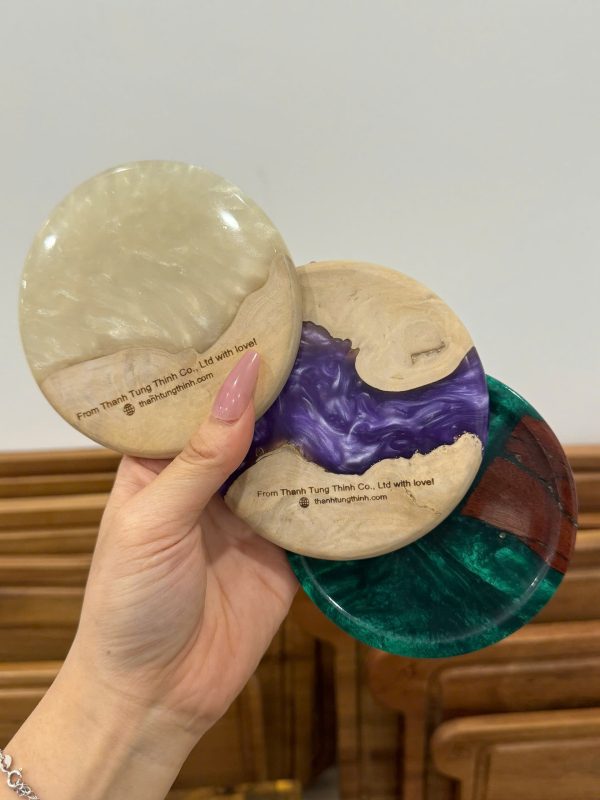

A wooden lid isn’t just the top of a jar — it’s the top of the brand pyramid, where sustainability, design, and emotion meet.
9. How to Choose the Right Wooden Lid Supplier for Your Business
Selecting a wooden lid supplier is more than a sourcing decision — it’s a long-term partnership that shapes your brand’s quality, consistency, and reputation. In B2B manufacturing, the right factory doesn’t just meet specifications; it anticipates them, offering flexibility, compliance, and design insight.
Below is a practical framework for importers, distributors, and private-label buyers seeking a reliable, scalable, and sustainable supply chain.
A. Verify Certification and Compliance
The first filter for any supplier is credibility through certification. Always request up-to-date proof of:


- FSC® Certification: Confirms that all wooden lids originate from responsibly managed forests.
- BSCI or SEDEX Compliance: Verifies ethical labor and workplace safety.
- ISO 9001:2015 ensures consistent quality management throughout production.
- SGS / FDA / Prop 65 Testing: Essential for food, candle, and cosmetic packaging applications.
Factories like Thanh Tùng Thịnh (Thatuwood) provide full documentation, including traceable batch codes and audit results, which helps importers pass customs and brand audits smoothly.
B. Evaluate Manufacturing Capacity and Technology
Ask your supplier about:
- Machinery: CNC lathe, sanding lines, laser engravers, UV coating systems.
- Production Volume: Typical monthly output and maximum surge capacity.
- Lead Times: Average turnaround for first-time and repeat orders.
- Defect Ratio: Consistent exporters maintain a <1.5 % rejection rate.
These details reveal whether the supplier can scale alongside your growth — or if they’ll bottleneck during peak demand.
C. Assess OEM/ODM Capabilities
Customization determines brand differentiation. A qualified wooden lid manufacturer should:
- Offer 3D design mock-ups and samples within 7–10 days.
- Support logo engraving, staining, and custom sizing.
- Provide tooling ownership clarity (especially for private-label exclusivity).
- Adapt to your existing packaging ecosystem (jar types, gasket preferences, etc.).
The ideal partner acts like a design collaborator, not merely a contractor.
D. Prioritize Communication and Transparency
In export manufacturing, communication can make or break a project. Choose a supplier that:
- Replies within 24 hours.
- Provides bilingual sales and engineering teams (English + Vietnamese).
- Shares real-time production photos and video updates.
- Has clear terms for sample approval, payment, and shipping (FOB/CIF).
Thatuwood maintains a dedicated export support team to guide clients through each production milestone — from quotation to container loading.
E. Inspect Packaging and Logistics Standards
Well-made lids still risk damage if poorly packed. Look for:
- Individual polybag or paper wrap to prevent abrasion.
- Humidity-controlled cartons with desiccant inserts.
- Custom barcode or SKU labeling for easy warehouse management.
- Optional drop-test reports for large retail shipments.
Attention to packaging details reflects a supplier’s overall discipline and reliability.
F. Check Reputation and Longevity
Reputation builds confidence. Choose suppliers with:
- Proven export history to markets like the US, EU, Japan, or Australia.
- Public references or testimonials from long-term B2B clients.
- Visible online presence (website, certifications, trade show participation).
For example, Thatuwood has supplied wooden lids and kitchenware for over 14 years, exporting to more than 25 markets under both OEM and private-label partnerships — a track record few competitors match.
In B2B sourcing, the right wooden lid supplier doesn’t just fill an order — they protect your brand, your reputation, and your promise to customers worldwide.
10. Conclusion
In a world where sustainability, design, and brand authenticity intersect, the wooden lid has quietly become a global symbol of premium, eco-conscious packaging. What began as a niche alternative to plastic caps has transformed into a core component of modern product identity — merging functionality, aesthetics, and environmental responsibility.
For B2B buyers, the message is clear: consumers no longer accept packaging that looks or feels disposable. They demand natural textures, traceable materials, and brands that can demonstrate accountability from forest to finish. Wooden lids answer all three demands while enhancing product appeal and perceived value.
From candles and cosmetics to gourmet foods and giftware, this small but powerful component turns every jar into a conversation piece. It gives weight, warmth, and credibility to your product — qualities that align perfectly with global trends toward sustainability and minimalist luxury.


As one of Vietnam’s leading manufacturers, Thanh Tùng Thịnh (Thatuwood) stands at the forefront of this transformation. With over 14 years of export experience, FSC-certified sourcing, and BSCI & ISO 9001 compliance, Thatuwood delivers large-scale production capacity with handcrafted precision. Every lid is made under strict quality control, from moisture stability to food-safe finishing, ensuring reliability across every shipment.
A well-made wooden lid doesn’t just seal a jar — it seals customer trust.
Now is the time for forward-thinking importers and brand owners to integrate sustainable wooden lids into their product lines. Partner with Thatuwood for:
- OEM/ODM customization (logo engraving, sizing, color matching)
- Global export readiness (FSC, BSCI, ISO, Prop65, FDA certifications)
- Flexible MOQ and competitive FOB pricing
🌿 Contact Thanh Tung Thinh today to explore your next wooden packaging collection — where craftsmanship meets compliance, and sustainability meets scalability.
📩 Email: helenthi@thanhtungthinh.com
🌐 Website: www.thanhtungthinh.com


